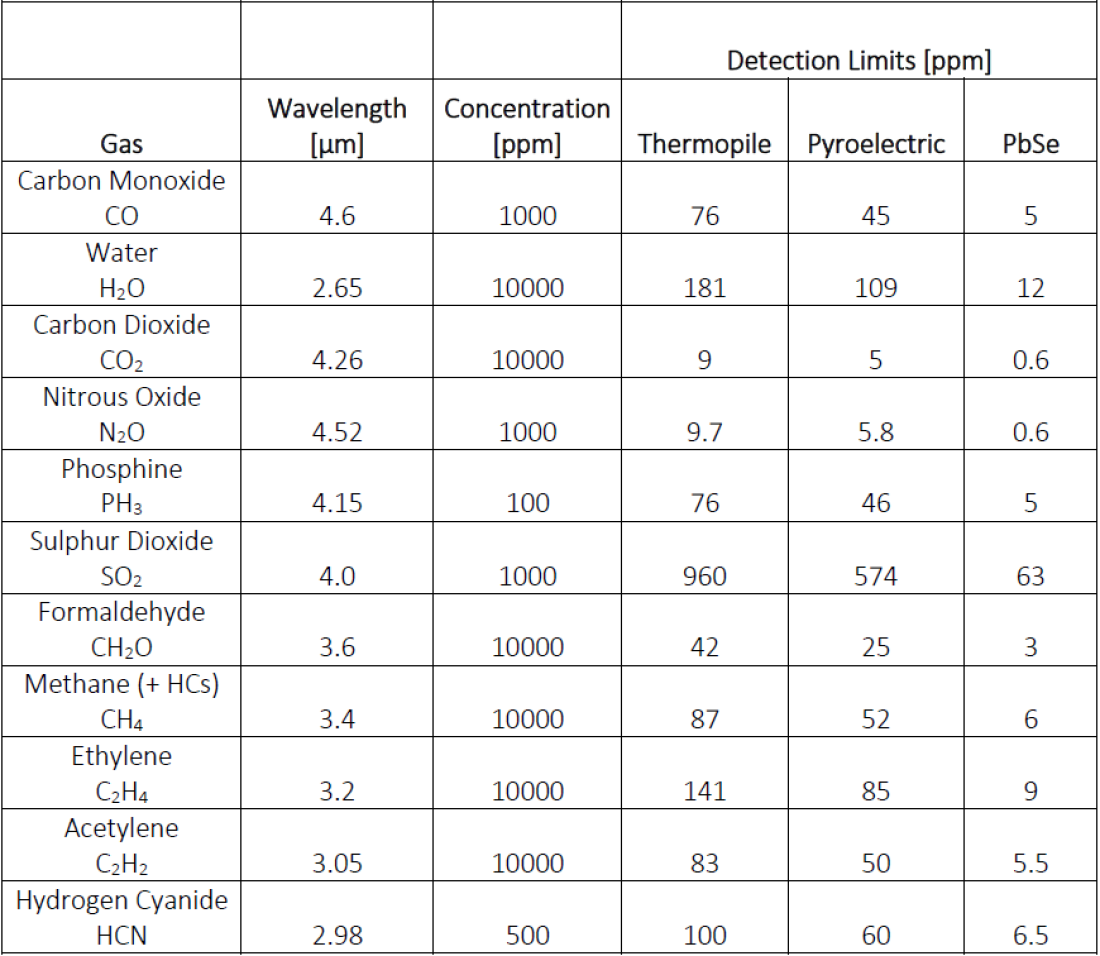Comparison of gas detection limits of NDIR Thermopile, Pyroelectric and PbSe detectors
Nondispersive infrared (NDIR) spectroscopy technique allows the reliable measurement of various gases including volatile organic compounds (VOC) over a broad concentration range. As compared to electrochemical alternatives, gas monitoring systems based on NDIR are in high demand due to their robustness. This makes them suitable for gas analysis in medical and automotive industry, environmental pollution monitoring, emission monitoring and gas leak detection in the oil, gas and chemical industries.
For any gas concentration measurement system, the detection limit is the figure of merit. It characterizes the minimum detectable change in concentration that can be measured. The detection limit for a given NDIR gas monitoring system depends strongly on the measurement setup itself, the gas and its concentration to be measured. The theoretical background and the mathematical calculations for the detection limit are explained in the white paper “Carbon dioxide (CO2) measurement using Non-Dispersive Infrared (NDIR) Spectroscopy with lead selenide (PbSe) photodetectors”.
In designing a gas measurement system, the system designer must consider key parameters such as reliability, measurement frequency, power consumption, mechanical dimensions and desired detection limit. This application note compares the achievable gas detection limits of different state-of-the-art photodetector technologies for several different gases. For a fair comparison, a hypothetical NDIR gas concentration measurement setup, as depicted in Figure 1 is simulated. Table 1 lists the considered system parameters for this setup, while Table 2 presents the calculated detection limits for given concentrations.


As explained in the above referenced white paper, the detection limit depends, amongst other factors, on the concentration range being measured. The concentrations in Table 2 are selected for each gas based on their exposure hazard limits given by NIOSH and OSHA.

Table 2 clearly shows that trinamiX PbSe photodetectors offer a significantly better detection limit due to their higher detectivity in the wavelength range 1-5 μm as compared to pyroelectric and thermopile technologies. A system designer can utilize this advantage to either have a gas sensor with a better resolution or to build a more compact and lower power gas detection system by reducing the system parameters, such as size of photodetector and optical path length or using a lower power infrared source.
Conclusion
trinamiX PbSe detectors, due to their high detectivity, faster response and high selectivity enable NDIR gas monitoring with an improved accuracy and fast measurement rate. The detectors are available in traditional TO packages and additionally as bare-chips with patented thin film encapsulation. These bare chip sensors can provide a significant reduction in the footprint and BoM (bill of materials) cost of the gas detection system. Multi-pixel sensors can also be supplied to enable simultaneous detection of specific gases in multi-gas detection systems. The availability of a wide range of components as well as the large-scale manufacturing facilities, technology and interface electronics development expertise and application specific knowledge make trinamiX the perfect partner to assist in overcoming gas detection challenges.
Sales contact

Media contact


